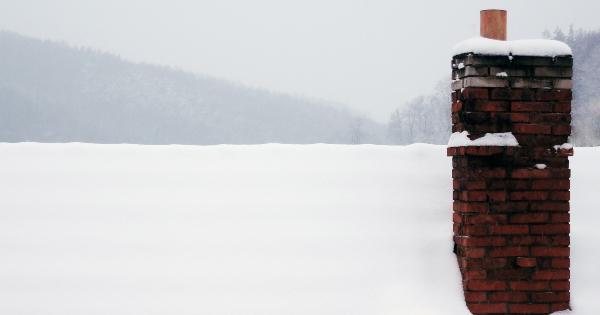Winter is Coming…Here are 9 Tips to Prepare

By Lauren White, RCS Assistant Editor.
Get your roof ready for whatever Mother Nature sends its way.
The colder temperatures are here and some states have even had their first snowfall. With that being said, it’s time to start winterizing and ensure your roof is ready for whatever Mother Nature decides to send its way. Making roof maintenance a yearly routine before winter sets in is an effective way to help keep your home warm and comfortable while preventing expensive repairs to fix damage caused by ice dams and leaks. Below are nine tips for prepping your roof for the winter months.
Many of the tasks below could be done by you, the homeowner, with the proper tools and safety equipment. However, we recommend hiring professionals to help with these tasks, especially with homes that are two-stories or taller because these tasks can be dangerous.
1 - Repair damaged shingles
If your roof has any missing, damaged or loose shingles, it’s best to get those repaired before winter to avoid exposing your home to roof leaks and water damage. Broken shingles allow water to seep underneath and eventually penetrate into your home. And loose shingles can be blown away with strong winter winds, leaving your roof vulnerable.
2 - Repair damaged flashing
Oftentimes roof flashing is overlooked, but it’s a vital component to the roofing system. “Roof flashing protects your home from water damage by diverting water from certain areas of the roof,” shared Amanda Wynn, a roofer for Rampart Roofing.
Look closely at the flashing around the chimney, roof valleys and overhangs to make sure it’s still in good condition and won’t allow for any leaks. “Roof valleys and overhangs are two of the most common places for ice dams to form,” said Joe Palumbo, president of Ice Dam Guys.
3 - Replace old caulking
Caulking/sealant is used around vent pipes, chimneys and counter-flashing, and it’s recommended that homeowners check these areas to ensure the caulking hasn’t separated or cracked. According to Richard D’Angelo, operation manager at JWE Remodeling and Roofing, “In the winter when things get cold they will shrink, and caulking can become separated or cracked if it’s old and dry. New caulking will be able to expand and contract with the cold and warm weather, keeping critical junctures in your roof watertight and dry.”
Should you need to re-caulk, it’s a fairly easy DIY project, as long as you feel comfortable getting on your roof. Be sure to remove any old caulking beforehand by scraping it with a screwdriver, just be careful not to puncture the flashing or roofing material below.
4 - Invest in a roof rake
While shovels and plows are great for snow removal, they’re not very helpful when it comes to removing snow from your roof. If you haven’t already, invest in a roof rake. This tool will keep you off the roof and prevent snow from piling up. Joe Palumbo shared, “If you prevent snow from piling up on the cold overhangs, you create a path for runoff (snow melted by the warm roof) to flow off of the roof harmlessly, rather than freeze and cause ice dams and leaking.”
In order to keep your snow removal process manageable and more enjoyable, it’s recommended that you rake your roof after every six inches of snowfall. Roof rakes are easy to use - I personally have used one to rake the roof on my parents’ house and business, and I can honestly say I enjoy it more than shoveling the sidewalk! Palumbo suggests using a plastic roof rake or one with rollers because they won’t rub the granules off the shingles. Just be sure to look out for any loose shingles or flashing before raking the roof so you don’t accidentally hook onto them.
5 - Trim the trees
Overhanging branches can pose a threat to your roof. Trimming the trees around your roof can help you avoid roof damage when winter hits. “A single bad snowstorm could break off the branch over your home, which then may inflict serious damage to your roof,” shared Constantine Anest, owner of Ethos Roofing.
6 - Add a heat cable
Heat cables are helpful to have in areas where ice dams have formed before, such as gutters, downspouts and sometimes on the roof. Adding heat cables in the gutter and downspouts is a simple DIY task.
7 - Improve attic ventilation
Proper attic ventilation is not only important to keep your home energy efficient, especially during the winter months, but it also helps prevent the build up of ice dams on your roof. Todd Miller, president of Isaiah Industries, explains one way you can check your ventilation, “Close up all ingress openings in the attic and hold a piece of light tissue paper up toward the exhaust vents...If you do not see air movement, then you either have inadequate ventilation or your intake vents are blocked by insulation or perhaps have even been painted shut over the years.”
Adding more roof vents or removing insulation that could be blocking vents are two ways to improve attic ventilation.
8 - Add or upgrade insulation
Insulation is also an important component of the roofing system to prevent ice dams. Daniel Young, found of Kingdom Roofing Systems, explains, “Hot air from inside of the home travels to your attic space because there is not enough insulation to stop the heat transfer...Once the hot air meets the bottom of the roof deck, the snow melts, then the temperature drops at night and the melted snow freezes and turns to ice.” Check for any missing or damaged insulation in the attic that would need to be added or replaced by a professional.
9 - Clean gutters and downspouts
While gutters and downspouts are technically roofing accessories, cleaning them is a vitally important task to complete before winter arrives. Having clear gutters and downspouts prevents clogs from occurring, which can lead to destructive ice dams.
“If ice accumulates around gutters and eaves, it can form an ice dam that blocks roof drainage and leads to a freeze-thaw cycle that separates shingles from the roof deck and creates an entry point for moisture,” shared Alex Pecora, director of roofing product management for CertainTeed.
If you choose to clean the gutters and downspouts on your home, make sure you take the proper safety precautions. For houses that are two-stories or taller, we recommend calling a professional.
Have a question? AskARoofer!
Find your local roofing contractor in the RoofersCoffeeShop® Contractor Directory.
Original article source: MSN










Comments
Leave a Reply
Have an account? Login to leave a comment!
Sign In